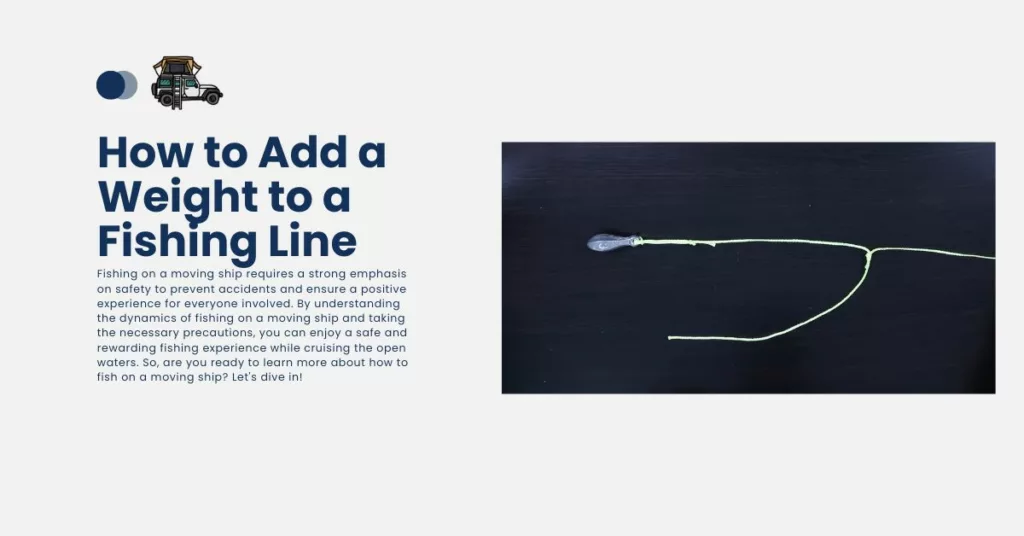
Are you new to fishing and wondering how to add weight to a fishing line? Adding a weight or a sinker to your fishing line is an essential step to help you catch more fish. It helps to sink the bait deeper in the water, making it more visible to fish and increasing your chances of catching them.
There are different types of weights or sinkers that you can use depending on the fishing conditions and the type of fish you are targeting:
- Split Shot
- Rubber Core
- Ring Loop & Eye
- Sliding Sinkers
However, it’s important to know how to add them to your fishing line correctly to prevent tangling and ensure a successful fishing experience.
By the end of this article, you will be equipped with the knowledge and skills to add weight to your fishing line like a pro.
So let’s Get Started!
Key Takeaways
- Adding a weight or a sinker to your fishing line is essential to catch more fish.
- Different types of weights or sinkers are used depending on the fishing conditions and the type of fish you are targeting.
- Knowing how to add weight to a fishing line correctly can prevent tangling and ensure a successful fishing experience.
Table of Contents
How To Add Weight To a Fishing Line
In this section, we will go over four common methods:
Split Shot, Rubber Core, Ring Loop and Eye, and Sliding Sinkers.
#1 Split Shot
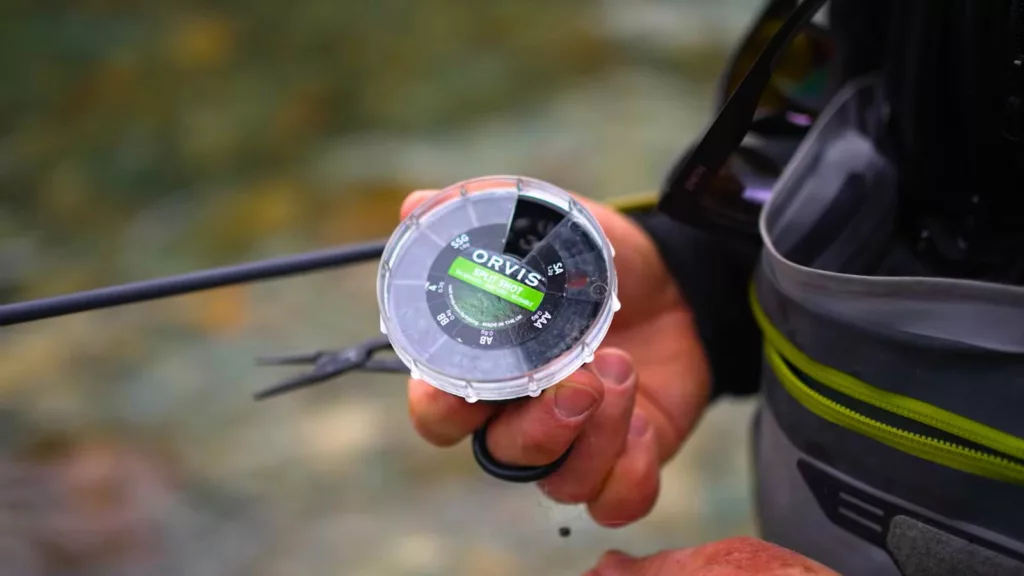
Split shot weights are the most common type of weight used in fishing. They are small, round, lead weights with a split in the middle that allows them to be easily added to the fishing line. Here’s how to add a split shot weight to your line:
- Pinch the split shot weight with a pair of pliers or your fingers.
- Place the fishing line in the split.
- Squeeze the split shot weight closed with the pliers or your fingers.
Best Split Sot Weight: Water Gremlin Removable Split Shot Super Pak
Best Alternative: Bullet Weights RGK-6 Rubber Grip Assortment 45 Pieces
#2 Rubber Core
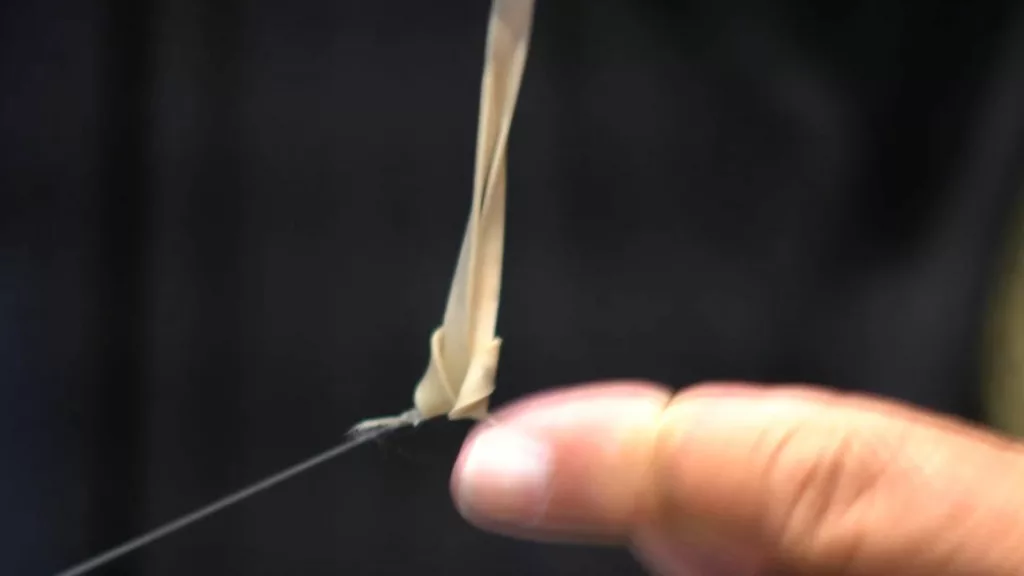
Rubber core weights are a popular choice for fishing in areas with heavy vegetation or rocky bottoms. These weights have a rubber core that grips the line, preventing the weight from sliding up and down the line. Here’s how to add a rubber core weight to your line:
- Thread the fishing line through the rubber core weight.
- Push the rubber core weight onto the line until it reaches the desired depth.
- Use pliers to squeeze the rubber core weight onto the line to secure it in place.
Best Rubber Core Weight: Bullet Weights Rubber Grip Sinkers
Best Alternative: Water Gremlin Company PRC-000 Rubbercore Sinker
#3 Ring Loop & Eye
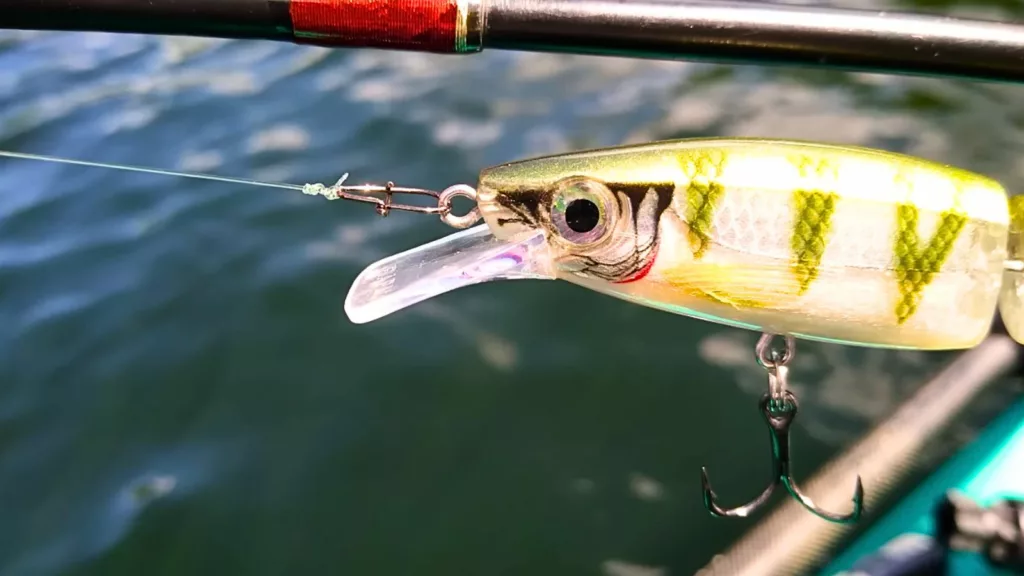
Ring loop and eye weights are versatile options that allow you to easily change the weight without having to re-tie your line. These weights have a ring or loop on one end and an eye on the other. Here’s how to add a ring loop and eye weight to your line:
- Tie a swivel to the end of your fishing line.
- Attach the ring or loop end of the weight to the swivel.
- Tie a leader line to the eye end of the weight.
- Attach your hook and bait to the leader line.
Best Ring Loop & Eye: Mr. Crappie Slipper Float Cigar
Best Alternative: Water Gremlin Green Gremlin Removable Split Shot
#4 Sliding Sinkers

Sliding sinkers are a popular choice for fishing in deep water. These weights slide up and down the line, allowing you to adjust the depth of your bait. Here’s how to add a sliding sinker to your line:
- Thread the fishing line through the hole in the center of the sliding sinker.
- Tie a swivel to the end of your fishing line.
- Attach the sliding sinker to the swivel.
- Tie a leader line to the swivel.
- Attach your hook and bait to the leader line.
Best Sliding Sinkers: Bullet Weights Slip Sinkers
Best Alternative: Spro Freestyle Tungsten Bullet Sinker
By following these methods, you can easily add weight to your line and start catching more fish.
What Is A Sinker?
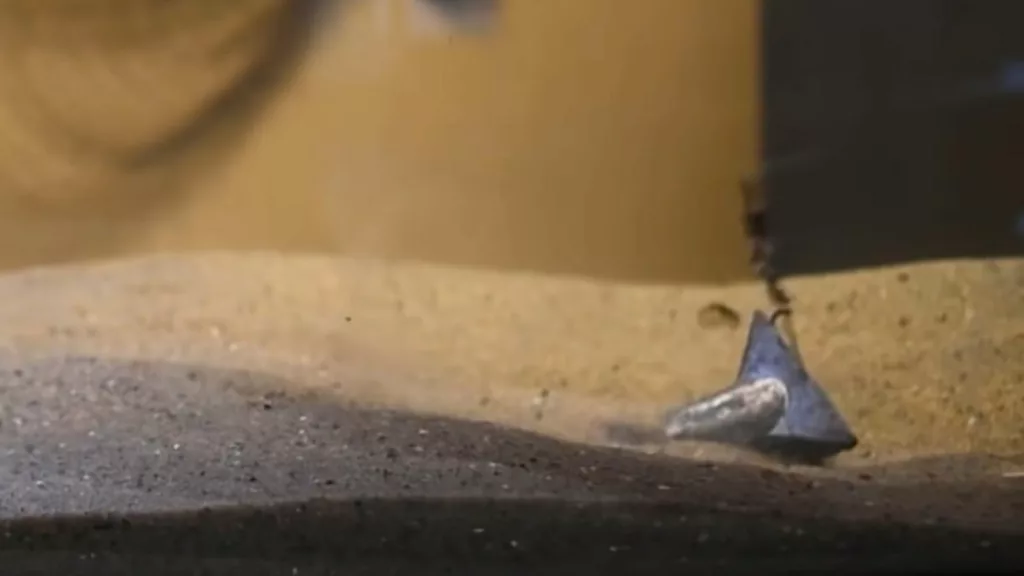
When fishing, you want your bait to sink to the desired depth in the water column. A sinker is a small metal object that is attached to your fishing line to help your bait sink to the desired depth.
Sinker weights come in a variety of shapes and sizes, including round, oval, or pyramid. They can be made of materials such as lead, steel, brass, or tungsten. Each type of sinker has its unique characteristics and applications, so it’s important to choose the right one based on your target species, technique, depth, and current.
The primary purpose of adding a sinker to your fishing line is to help your bait or lure reach the fish that are swimming at different depths in the water. Without a sinker, your bait may float on the surface or sink too quickly, making it difficult to catch fish.
Now that you know what a sinker is and why it’s important, let’s take a look at how to add a sinker to your fishing line.
Why Should I Use a Sinker?
As a seasoned angler with 8 years of fishing experience, I can tell you that using a sinker has several benefits. First, it can increase your casting distance and accuracy, allowing you to reach those hard-to-reach spots where fish are more likely to be. Second, it can keep your bait at the desired depth and position, making it more visible and attractive to fish.
Moreover, a sinker can prevent your fishing line from drifting with the current or wind, which can help you maintain control over your line and bait. Additionally, some sinkers can attract fish with sound or movement, making them more likely to bite.
There are several situations where using a sinker is advantageous. For example, if you’re fishing in deep water or strong current, a sinker can help your bait reach the desired depth. If you’re fishing with live bait or bottom rigs, a sinker can keep your bait in place and prevent it from floating to the surface. Finally, if you’re fishing for bottom-dwelling or shy fish, a sinker can make your bait more visible and attractive.
Pros and Cons of Sinker
In this section, we will discuss the pros and cons of using a sinker in fishing.
Pros
- Improves fishing performance and efficiency: By adding a sinker to your fishing line, you can sink your bait deeper into the water, making it more visible to fish and increasing your chances of a successful catch. This is especially useful when fishing in deep waters or during windy conditions where the bait may be blown away by the wind.
- Allows for more versatility and flexibility in fishing techniques: Sinkers come in various sizes and shapes, allowing you to adjust the weight and resistance of your fishing line. This gives you more control over your fishing technique, making it easier to adapt to different fishing conditions and target different types of fish.
- Enhances the presentation and action of the bait: Sinkers can also improve the presentation and action of your bait. By adjusting the weight and resistance of your fishing line, you can create a more natural and attractive movement of the bait, making it more appealing to fish.
Cons
- Adds weight and drag to the line and rod: One of the main disadvantages of using a sinker is that it adds weight and drag to your fishing line and rod. This can make it harder to cast your line and may cause fatigue in your arms and hands.
- May cause line abrasion or tangling: Sinkers can also cause line abrasion or tangling if not attached properly. This can weaken your fishing line and make it more prone to breaking or snapping.
- May harm the environment or wildlife if lost or ingested: Lastly, if a sinker is lost or ingested by wildlife, it can cause harm to the environment or wildlife. It is important to dispose of sinkers properly and avoid using lead sinkers, which can be toxic to wildlife if ingested.
It is important to consider the potential drawbacks and use them responsibly to minimize harm to the environment and wildlife.
Tips For Beginners
If you are a beginner, don’t overwhelm yourself with tons of techniques. Just focus on 1-2 one or two basic techniques for adding weights. The split shot and rubber core methods explained in the content are excellent starting points.
Safety First
Always work carefully while adding the weight to the fishing line especially if you are a beginner. The hook of the fishing is a sharp object and it can damage your finger. When handling weights and sinkers, especially if they’re made of lead, be mindful of safety. Wash your hands after handling weights, and avoid putting them in your mouth. Consider using lead-free alternatives to minimize environmental impact.
Final Thoughts
Adding weight to your fishing line is a crucial step in increasing your chances of a successful catch. By sinking your bait deeper into the water and making it more visible to fish, you can improve your odds of attracting a bite. Here are some key takeaways to keep in mind when adding weight to your fishing line:
- Consider the type of fish you are targeting and the fishing conditions you are facing. This will help you determine the best type and amount of weight to add to your line.
- Split shots and bullet weights are two common types of sinkers that can be used to add weight to your line. Split shots are best for fine adjustments, while bullet weights are ideal for faster changes between casts.
- Strike a balance between adding enough weight for proper depth control and not overburdening your line. This will help you maintain casting distance and sensitivity to bites.
- Always make sure to tie a secure knot when adding weight to your line. This will prevent the weight from slipping off and potentially spooking fish.
By following these tips and experimenting with different weights and sinkers, you can increase your chances of a successful fishing trip. Happy angling!
Frequently Asked Questions
What are the different types of fishing line weights I can use?
There are several types of fishing line weights you can use, including split shot weights, egg sinkers, bullet weights, and more. Each type of weight has its unique features and benefits, so it’s important to choose the right one for your fishing needs.
How do I tie a weight and hook on a fishing line?
To tie weight and hook on a fishing line, you can use a variety of knots, including the Palomar knot, the improved clinch knot, and the uni knot. Each knot has its strengths and weaknesses, so it’s important to choose the right one for your fishing situation.
Where should I put the weight and bobber on my fishing line?
The placement of your weight and bobber on your fishing line will depend on the type of fishing you’re doing and the depth of the water you’re fishing in. As a general rule, you should place your weight about 6-12 inches above your hook, and your bobber about 1-2 feet above your weight.
What is the best way to add a sliding weight to my fishing line?
To add a sliding weight to your fishing line, you can use a variety of techniques, including the sliding sinker rig and the Carolina rig. These rigs allow your weight to move up and down your fishing line, giving you more control over the depth of your bait.
Should I add weight to my fishing line?
Adding weight to your fishing line can be a great way to increase your chances of catching fish, especially if you’re fishing in deep water or using light tackle. However, it’s important to use the right amount of weight and to choose the right type of weight for your fishing situation.
